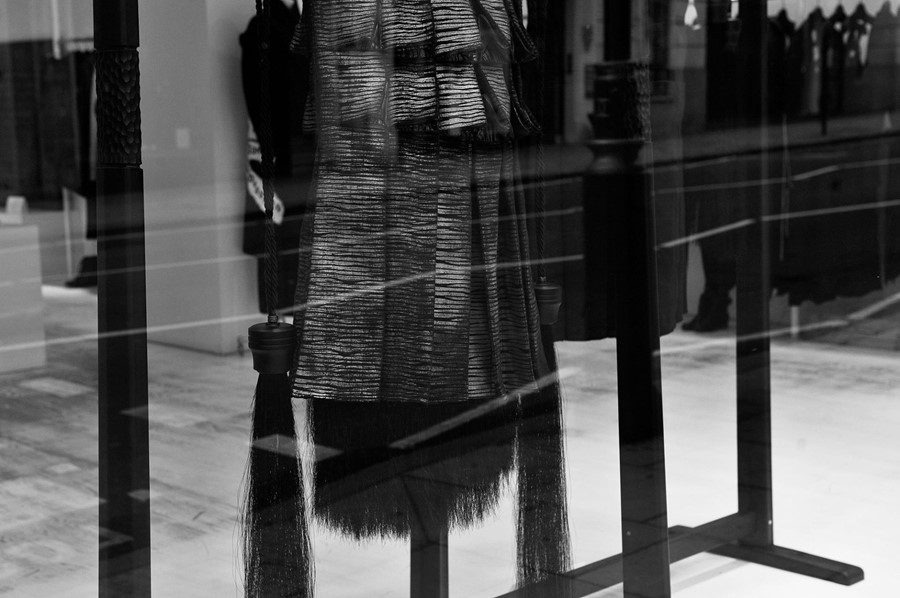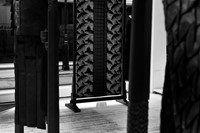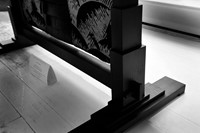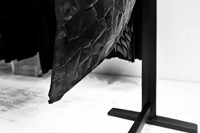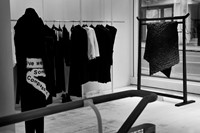French artist and interior designer Pietro Seminelli has created a series of sculptures in homage to the Japanese designer's A/W16 collection, and it's quite a sight to behold
French artist and interior designer Pietro Seminelli looks very much at home standing in the midst of Yohji Yamamoto’s expansive Conduit Street store, where rails of the Japanese designer’s structural black ready-to-wear are punctuated with six towering textile sculptures of his own making. It makes sense, given the nature of his collaboration; since Yamamoto’s A/W16 show in Paris in February, Seminelli, who is often referred to as a ‘Master of Pleats’, has been working very closely with the collection, translating Yamamoto’s themes into a series of fabric and paper objects as a kind of homage. Or as Seminelli himself explains it, apologising for his near faultless English, “to combine Yohji’s style and spirit with mine, and to think about the place where they are meeting.”
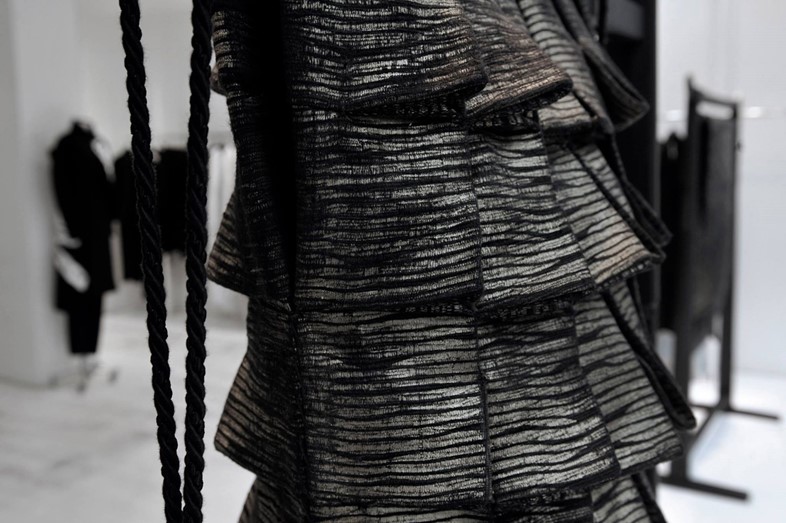
As artist/fashion designer collaborations go, Yamamoto and Seminelli are particularly well matched. Seminelli’s background is largely in architecture and interior design – he uses his rich and multifaceted understanding of folding and pleating techniques to created elaborate textile surfaces, blind-like structures among them – and as he is quick to explain, his architectural works and Yamamoto’s fashion ones have much more in common than one might immediately think. “It was interesting to make that link between the architecture of the clothes and the architecture of a house,” he explains, comparing interior design and sartorial choices to dermal layers, to be grown and shed at intervals. “First is our skin. The second skin could be the clothes, and the third skin could be, on a bigger scale, the houses and the interior design.”
There's a cartographic element to these pieces too; each fold is treated like a scar in the landscape. “Do you know Simon Hantaï?” Seminelli asks me, childlike in his excitement about the painter, who, I have since learned, is best known for his pioneering methods of printing onto paper and canvas using pleated fabric. “He said that during the process of pleating he was making a geographic place, because it was some events are happening on the surface. And when you are folding, in a way it’s the same: it’s like a skin, it’s one piece, only one piece. With the fabric it’s easier, because it’s strong compared to paper. You can't make so many mistakes."

Seeing the pair's respective work in such close proximity a shared fascination with the notion of armour, or protective clothing, emerges, and this was to become a principal theme in Seminelli’s project. “Wearing Yohji is a real experience,” he says, clearly reverential of the designer’s long career. “The first time I wore a coat of his, I looked at it and said, ‘oh, the shape is nice, the fabric is nice, and the destruction of the silhouette is a good thing’. But then I put that coat on me, and when you do up the buttons, it has the effect of making you stretch a little. It changes your cadence.” This, he continues, is not dissimilar to the effect of walking through a grand building – say, the Opera in Paris, where Seminelli has spent long stretches working – and watching him lengthen his spine to demonstrate how such interiors demand a different posture, you can see how the two effects might be similar. Where Yamamoto’s is expressed through fluid silhouettes and ruched sleeves, however, Seminelli’s is in the textiles themselves. One of his pieces from the store is made from an enormous expanse of black parcel paper, folded so as to resemble a huge hulk of armadillo skin suspended in the air.
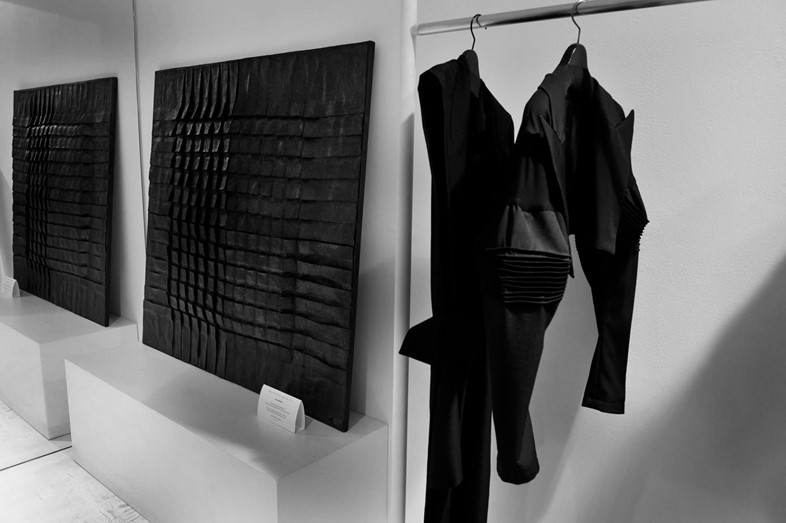
In some of the other pieces, Seminelli gives voice to Yamamoto’s Japanese heritage more literally; several of the handcrafted sculptures which are made from heavily worked and pleated fabrics take on a warrior form, something like Samurai costume, suspended from wooden kimono stands which were created specifically for the display. Likewise, Yamamoto’s experimentation with depth of colour pervades Seminelli’s vision; the artist’s main challenge, he explains, was in making “the blacks blacker”. “Like the painter Soulages, there is a very large variety of black [in Yamamoto’s A/W16 collection], so the idea was to play with the blacks – to use it in different ways, the matte one, or the glazed one.” The collaborative process was lengthy, beginning wth initial sketches responding to the collection back in the Spring, followed by a series of conversations with weavers, trips to specialist stores to source the right kinds of yarn (“it has to be tough, like for workmen’ uniforms”), endless experiments with the ways differently treated vinyl and linens would fold, retaining their shape. Every piece was constructed painstakingly by hand by Seminelli’s small team. It pays off, however. Glimpsed through Conduit Street's long windows, his sculptures look so natural among the store's wares that they might be part of the collection itself. An homage indeed.
Yohji Yamamoto X Pietro Seminelli is at the Yohji Yamamoto boutique on Conduit Street, London, as part of London Design Festival, until September 24, 2016.
